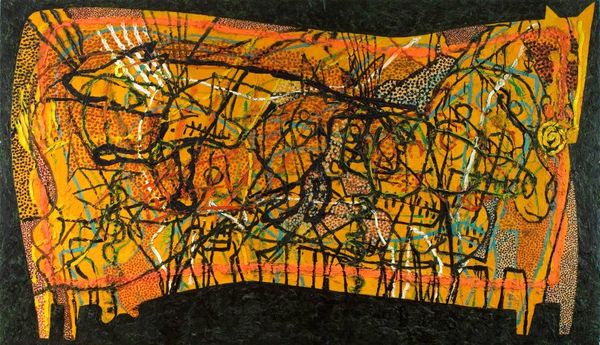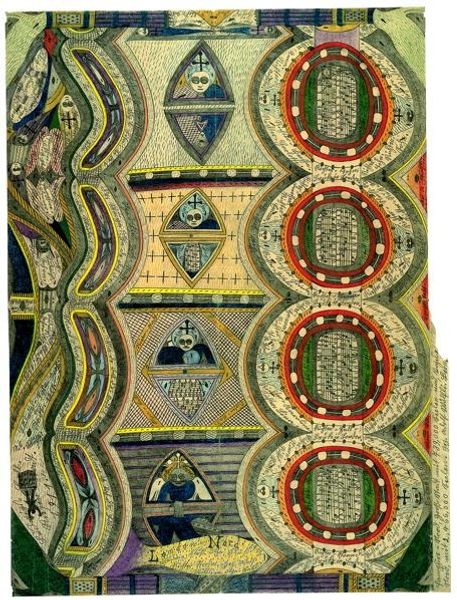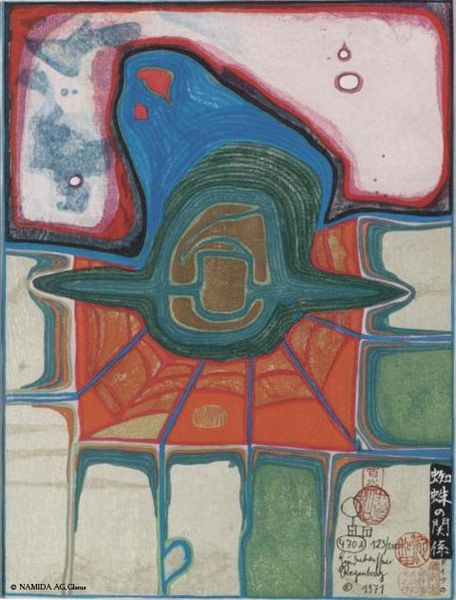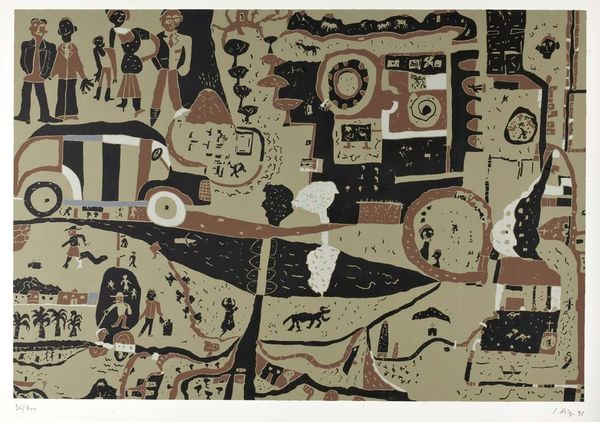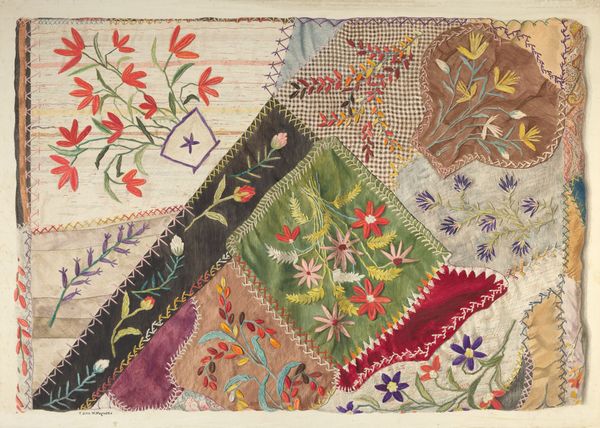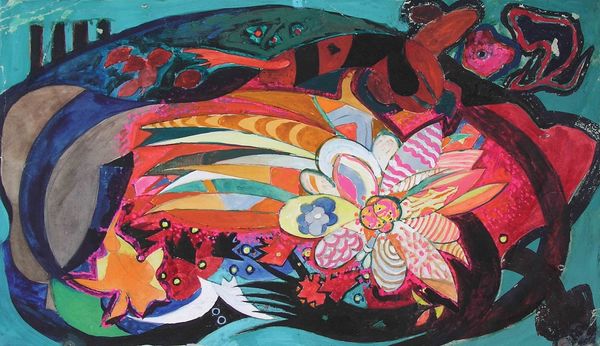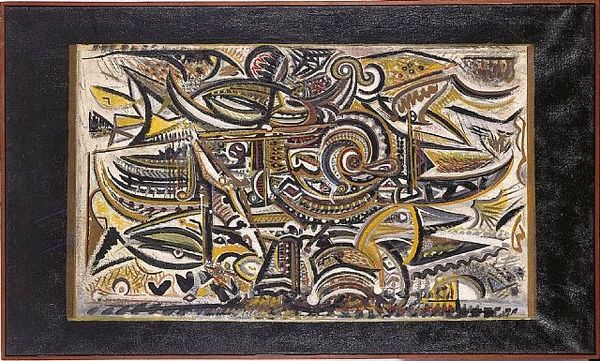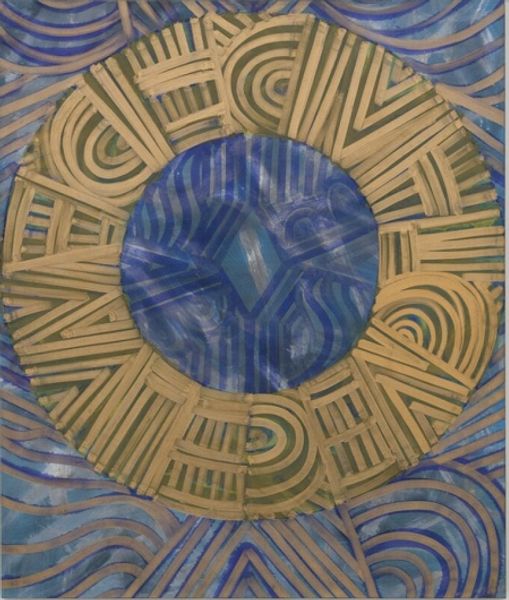
drawing, paper, ink
#
drawing
#
art-nouveau
#
outsider-art
#
paper
#
ink
#
expressionism
#
naive art
#
decorative-art
#
decorative art
Copyright: Public domain
Curator: This is “Saint Mary Castle Giant Grape (Unitif Zohrn Heavy Tons),” a work created circa 1915 by Adolf Wölfli. It combines ink and colored pencil on paper. Editor: My immediate reaction is one of intense visual stimulation. It’s incredibly busy, almost overwhelming. There are these concentric circles, linear text fragments, and these… are those giant grapes? It has an unusual rhythm of meticulous details and fantastical shapes. Curator: Indeed. Wölfli, a Swiss artist associated with Art Brut or Outsider Art, spent much of his adult life in a psychiatric clinic. His art became a world-building exercise. The 'Saint Mary Castle' may reflect his sense of place and religious background while the 'Giant Grape' perhaps symbolizes abundance or even a warped vision of nourishment within the confines of his institutional existence. Editor: The grapes themselves, bursting with orange and yellow, seem almost representational amid all this abstract detail. The composition leads the eye through a system of spirals and curves that, while ordered, hint at an unravelling of form. I can also appreciate how this contrasts with the use of rigid lines to portray the details of architectural forms in other sections. Curator: Precisely. And the writing you see interwoven throughout the artwork, a constant feature in his drawings, is not always legible, but functions as a decorative element that anchors his reality and mythology. It could be his way to negotiate how society treated him at that time, which involved heavy documentation of his medical state and imprisonment. The Art Brut movement truly questioned existing practices of exhibition in Western art spaces, celebrating forms of creativity made far from any art world's spotlight. Editor: The layering is really masterful, it blurs any boundary between text and form. It’s this almost manic dedication that commands my attention. The texture—so flat yet somehow dimensional due to the meticulous layering and varied line weights. It's both soothing in its exactitude and anxiety-inducing in its density. Curator: That complexity and the social context in which it was produced challenge our assumptions. It’s not just a pretty picture; it reflects the history of institutions, mental health and artistic expression in the 20th century. Editor: True. Seeing how the artistic vision prevails is thought-provoking, especially since that vision was conceived beyond the usual dynamics of cultural acknowledgement. Curator: Ultimately, this work invites us to reconsider our understanding of creativity and the value we assign to diverse forms of expression, both historically and in the present day. Editor: For me, the act of looking at this piece is like visually processing information – almost like deciphering a mind at work. It is an insight into something extraordinary and unsettling.
Comments
No comments
Be the first to comment and join the conversation on the ultimate creative platform.
